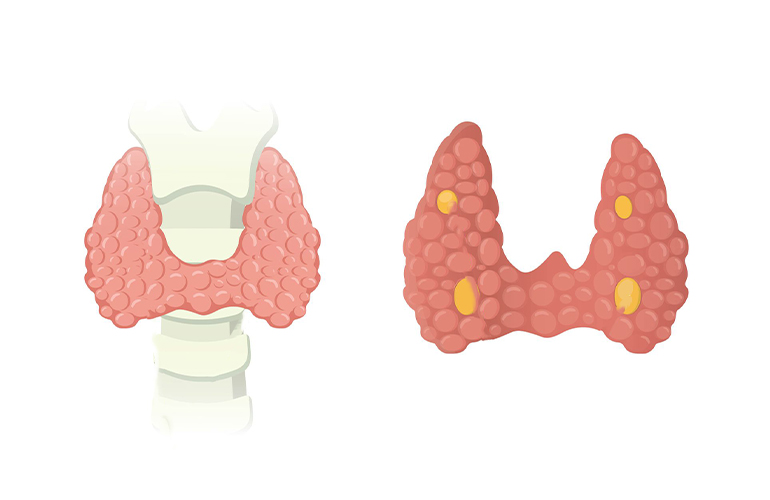
Parathyroid Surgery
General SurgeryThe parathyroid gland is the most common of the four located on the back of the thyroid gland. Each parathyroid gland is normally about 3 to 5 millimeters in diameter and weighs 30 to 60 milligrams. Parathyroid glands secrete parathyroid hormone (PTH), which controls calcium levels in the bloodstream. Parathormone is the most important hormone that regulates the balance of calcium and phosphorus, which are very important minerals for the body, in the tissues. In the body, especially the bones, kidneys and small intestine, respond to PTH by increasing calcium levels in the blood.
Treatment of parathyroid gland diseases
Treatment of parathyroid gland diseases may vary. Different methods can be followed for the treatment of hyperparathyroidism, which means overproduction of the hormone, and hypoparathyroidism, which results from underproduction, with surgery and drug treatments.
Changes in blood calcium balance can cause various symptoms, but with the widespread use of routine blood tests, many patients without obvious findings can be diagnosed.
Hyperparathyroidism
It is 3 times more common in women than in men. Hyperparathyroidism is common in women over the age of 40. There is familiality in 20% of cases.
Fatigue, easy fatigue, bone and joint pain, decreased appetite, nausea, constipation, drinking too much water, excessive urination, itching and depression are among the common symptoms. In advanced cases, significant osteoporosis, bone fractures, and kidney stones may occur.
In blood tests, parathormone, calcium levels are high and phosphorus levels are low. There is excessive excretion of calcium in the urine.
Diagnosis is made by ultrasonography and sestamibi scintigraphy, as well as blood and urine tests.
Hyperparathyroidism treatment
In the treatment of hyperparathyroidism, the cause and degree of the disease determine the treatment planning.
Primary Hyperparathyroidism, that is, the parathyroid gland producing excess hormones due to problems arising from it, is usually caused by one or more of the parathyroid glands producing excessive hormones.
Why it is most often called adenoma is the nodular enlargement of one (most commonly) or more of the parathyroid gland. 80-85% of cases have single parathyroid adenoma, 4-5% have double adenoma, 10-15% have multiple gland hyperplasia, and less than 1% have parathyroid cancer.
Surgical removal of the enlarged gland is the most selective treatment method.
Calcimimetic drugs, vitamin D-containing drugs or hormone replacement therapies can be used to balance the calcium level in patients who are not suitable for parathyroid surgery. Which medication will be used and its dosages should be determined by the doctor conducting the treatment process.
Treatment for Secondary Hyperparathyroidism varies depending on the underlying cause. The most common causes of Secondary Hyperparathyroidism are vitamin D deficiency and kidney diseases (chronic kidney diseases). Once the cause is determined, treatment should be tailored to the cause. If the cause is vitamin D deficiency, replacement therapy should be planned. Permanent treatment of chronic renal failure, which is the most common cause of secondary hyperparathyroidism with clinical symptoms, is provided by kidney transplantation. However, drug treatments and, if necessary, surgical methods such as removing three and a half of the four glands can be applied.
Hypoparathyroidism
Hypoparathyroidism is a rare disease. The disease usually occurs in adulthood and is more common in women.
Signs and symptoms that develop in hypoparathyroidism due to temporary or permanent hypoparathyroidism and decrease in calcium levels in the blood after thyroid surgery; numbness-tingling in the hands, feet or around the mouth, uncontrollable painful muscle cramps in the face, hands and feet (a serious condition called tetany), memory problems, headaches, extreme fatigue, anxiety or depression, epileptic seizures, heart rhythm disorders.
Hypoparathyroidism Treatment
The aim of hypoparathyroidism treatment is to keep the calcium level in the blood, especially calcium, within normal ranges and to relieve the symptoms that occur as a result of hypoparathyroidism. For this purpose, calcium, vitamin D, magnesium or hormone replacement drugs may be used as prescribed by the doctor during the treatment process. In the treatment of hypoparathyroidism, it is important to regulate the patient's diet.